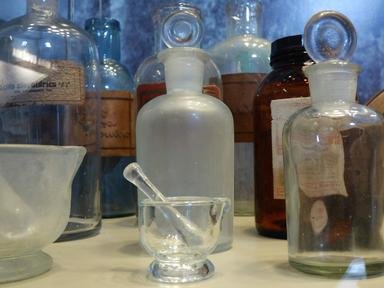Quiz Answer Key and Fun Facts
1. Strong (but light) silvery metal, widely used by the aerospace industry and in motor racing.
2. Rare earth element named after the Swedish village of Ytterby. Appears in period 6 of the periodic table.
3. Element with the highest melting point, widely used in electronics and the incandescent light bulb.
4. Member of the actinide series that was discovered in 1829 and named after a Norse God.
5. Silvery-white solid metal with the atomic number 81; historically used as rat poison.
6. Has the chemical symbol Tm and the atomic number 69. An expensive metal found in lasers and x-ray machines.
7. Radioactive metal mostly found in the waste produced by nuclear reactors. Atomic number 43.
8. Inert and corrosion-resistant bluish-grey metal often found with, and chemically similar to, niobium.
9. Despite its name, it is relatively rare to find this element in the Earth's crust. Its chemical symbol is Te.
10. Would make a good container for your afternoon tea and can be combined with copper to make bronze.
Source: Author
Fifiona81
This quiz was reviewed by FunTrivia editor
rossian before going online.
Any errors found in FunTrivia content are routinely corrected through our feedback system.

